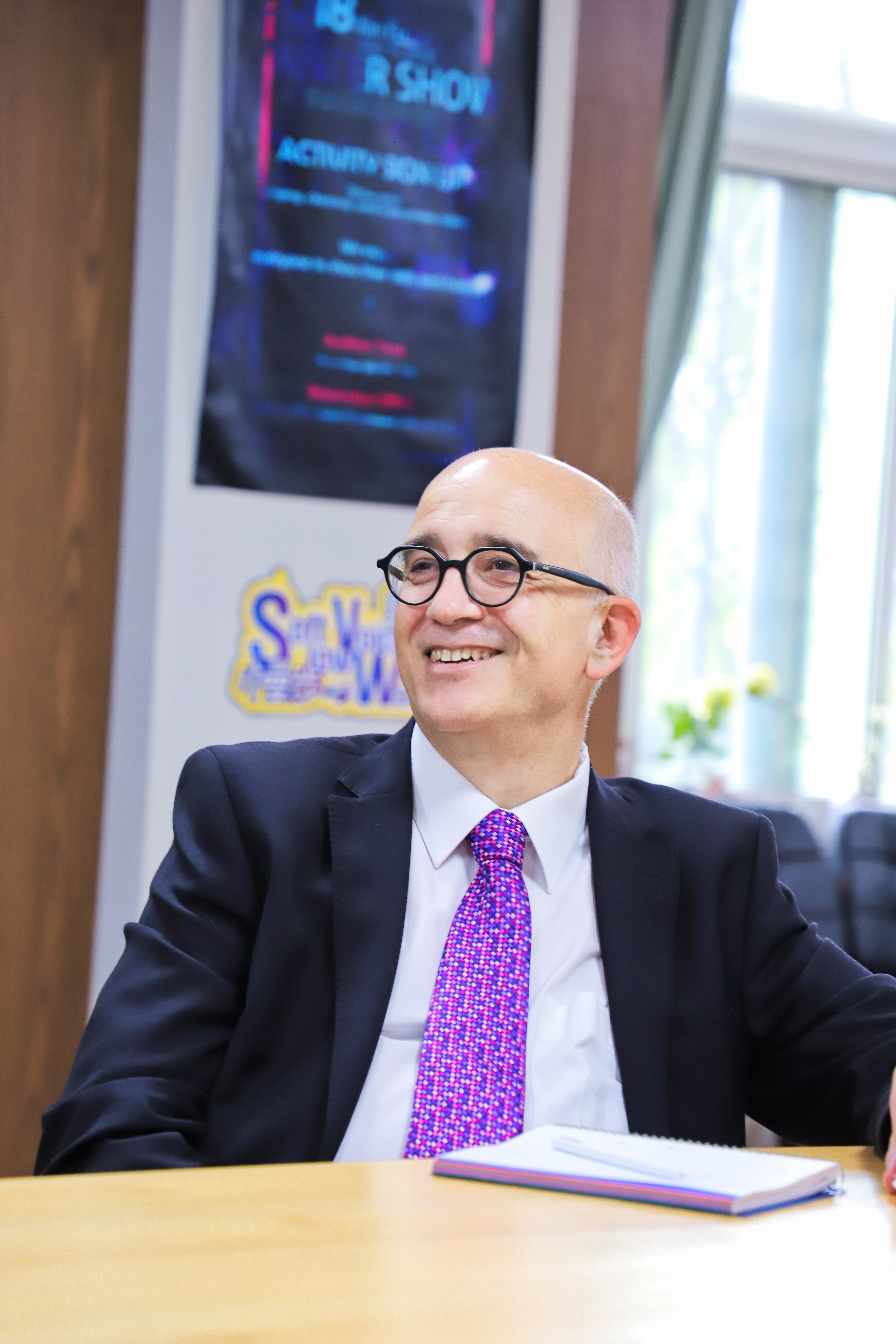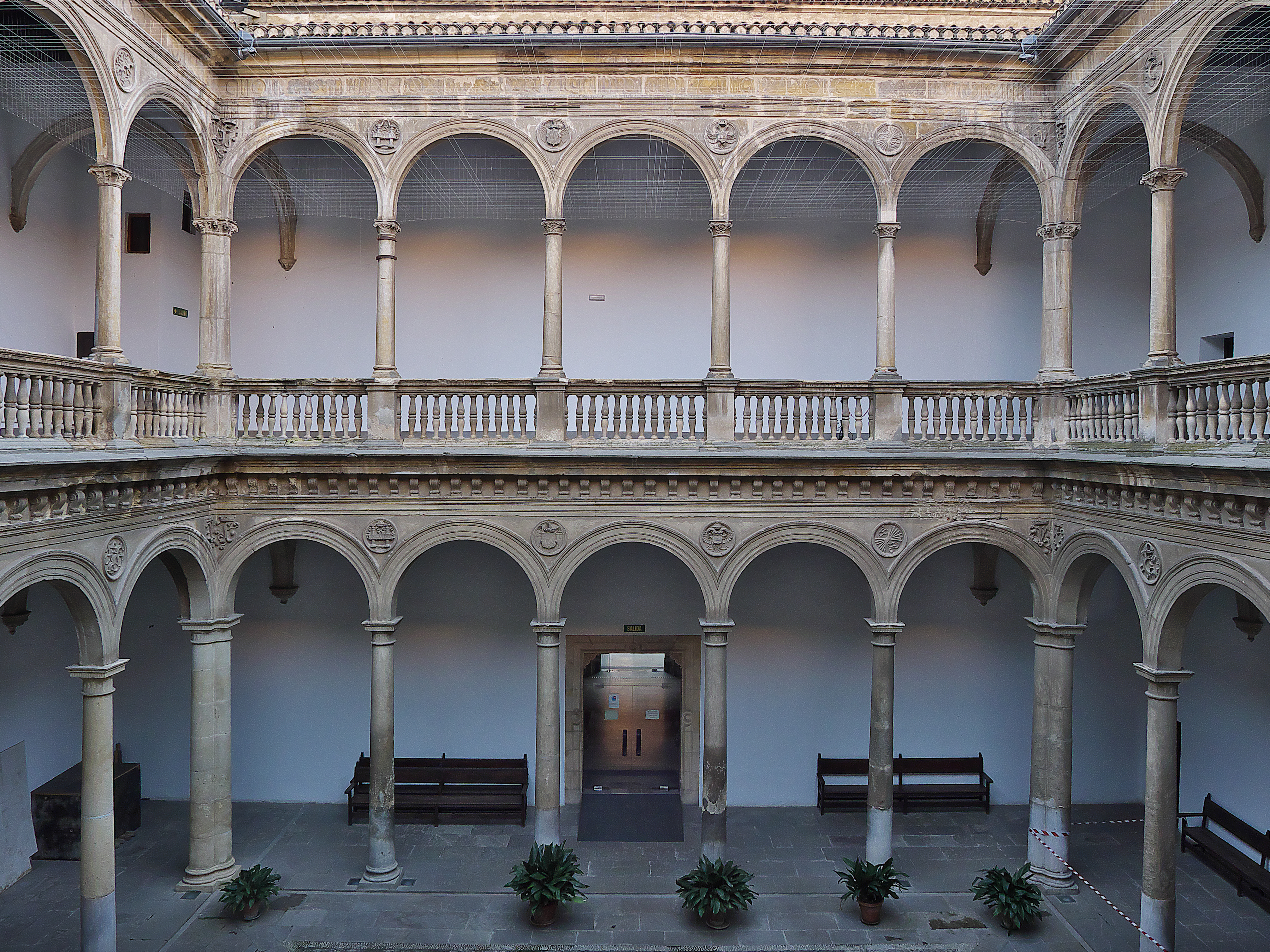|
Antonio Vidal-Puig
Antonio Vidal-Puig (born Valencia, Spain June 12, 1962) is a Spanish medical doctor and scientist who works as a Professor of Molecular Nutrition and Metabolism at the University of Cambridge ( UK), best known for advancing the concept that pharmacological targeting of brown fat may serve to treat overweight and obesity in affected individuals, as well as for introducing the concept of adipose tissue "expandability" as an important factor in the pathogenesis of insulin resistance in the context of positive energy balance. His published work focuses on areas such as adipose tissue metabolism and lipotoxicity, regulation of insulin secretion, and the pathophysiology of metabolic syndrome, obesity, and type 2 diabetes. In April 2024, he was granted the rank of ''doctor honoris causa'' from the King Juan Carlos University, Madrid. Education Vidal-Puig studied medicine at University of Valencia Medical School, and trained in endocrinology at the University of Granada Medica ... [...More Info...] [...Related Items...] OR: [Wikipedia] [Google] [Baidu] |
Lipotoxicity
Lipotoxicity is a metabolic syndrome that results from the accumulation of lipid intermediates in non-adipose tissue, leading to cellular dysfunction and death. The tissues normally affected include the kidneys, liver, heart and skeletal muscle. Lipotoxicity is believed to have a role in heart failure, obesity, and diabetes, and is estimated to affect approximately 25% of the adult American population. Cause In normal cellular operations, there is a balance between the production of lipids, and their oxidation or transport. In lipotoxic cells, there is an imbalance between the amount of lipids produced and the amount used. Upon entrance of the cell, fatty acids can be converted to different types of lipids for storage. Triacylglycerol consists of three fatty acids bound to a glycerol molecule and is considered the most neutral and harmless type of intracellular lipid storage. Alternatively, fatty acids can be converted to lipid intermediates like diacylglycerol, ceramides and fatt ... [...More Info...] [...Related Items...] OR: [Wikipedia] [Google] [Baidu] |
Harvard Medical School
Harvard Medical School (HMS) is the medical school of Harvard University and is located in the Longwood Medical and Academic Area, Longwood Medical Area in Boston, Massachusetts. Founded in 1782, HMS is the third oldest medical school in the United States. It provides patient care, medical education, and research training through its 15 clinical affiliates and research institutes, including Massachusetts General Hospital (MGH), Boston Children's Hospital, Dana–Farber Cancer Institute, Brigham and Women's Hospital, Beth Israel Deaconess Medical Center, Mount Auburn Hospital, McLean Hospital, Cambridge Health Alliance, The Baker Center for Children and Families, Spaulding Rehabilitation Hospital, and others. Harvard Medical School also partners with newer entities such as Harvard Catalyst, Broad Institute , Broad Institute of MIT and Harvard, Harvard Stem Cell Institute, the Center for Primary Care, and Wyss Institute for Biologically Inspired Engineering. History Harvard ... [...More Info...] [...Related Items...] OR: [Wikipedia] [Google] [Baidu] |
Beth Israel Deaconess Medical Center
Beth Israel Deaconess Medical Center (BIDMC) in Boston, Massachusetts is a teaching hospital of Harvard Medical School and one of the founding members of Beth Israel Lahey Health. It was formed out of the 1996 merger of Beth Israel Hospital (founded in 1916 by the Jewish community) and New England Deaconess Hospital (founded in 1896 by Methodist deaconesses). Among independent teaching hospitals, Beth Israel Deaconess Medical Center has ranked in the top three recipients of biomedical research funding from the National Institutes of Health. Research funding totals nearly $200 million annually. BIDMC researchers run more than 850 active sponsored projects and 200 clinical trials. The Harvard-Thorndike General Clinical Research Center, the oldest clinical research laboratory in the United States, has been located on this site since 1973. Overview BIDMC is one of the largest hospitals in New England, is affiliated with Joslin Diabetes Center and is a research partner of Dana-Fa ... [...More Info...] [...Related Items...] OR: [Wikipedia] [Google] [Baidu] |
Massachusetts General Hospital
Massachusetts General Hospital (Mass General or MGH) is a teaching hospital located in the West End neighborhood of Boston, Massachusetts. It is the original and largest clinical education and research facility of Harvard Medical School/Harvard University, and houses the world's largest hospital-based research program with an annual research budget of more than $1.2 billion in 2021. It is the third-oldest general hospital in the United States with a patient capacity of 999 beds. Along with Brigham and Women's Hospital, Mass General is a founding member of Mass General Brigham, formerly known as Partners HealthCare, the largest healthcare provider in Massachusetts. History Founded in 1811, the original hospital was designed by the famous American architect Charles Bulfinch. It is the third-oldest general hospital in the United States; only Pennsylvania Hospital (1751) and NewYork-Presbyterian Hospital's predecessor New York Hospital (1771) are older. John Warren, Profess ... [...More Info...] [...Related Items...] OR: [Wikipedia] [Google] [Baidu] |
Boston
Boston is the capital and most populous city in the Commonwealth (U.S. state), Commonwealth of Massachusetts in the United States. The city serves as the cultural and Financial centre, financial center of New England, a region of the Northeastern United States. It has an area of and a population of 675,647 as of the 2020 United States census, 2020 census, making it the third-largest city in the Northeastern United States after New York City and Philadelphia. The larger Greater Boston metropolitan statistical area has a population of 4.9 million as of 2023, making it the largest metropolitan area in New England and the Metropolitan statistical area, eleventh-largest in the United States. Boston was founded on Shawmut Peninsula in 1630 by English Puritans, Puritan settlers, who named the city after the market town of Boston, Lincolnshire in England. During the American Revolution and American Revolutionary War, Revolutionary War, Boston was home to several seminal events, incl ... [...More Info...] [...Related Items...] OR: [Wikipedia] [Google] [Baidu] |
University Of Granada
The University of Granada (, UGR) is a public university located in the city of Granada, Spain, and founded in 1531 by Emperor Charles V. With more than 60,000 students, it is the fourth largest university in Spain. Apart from the city of Granada, UGR also has campuses in Ceuta and Melilla. The university's Center for Modern Languages (CLM) receives over 10,000 international students each year. In 2014, UGR was voted the best Spanish university by international students. Outstanding in varied fields from Classics to Modern Languages and Computer Science, it has been recognised as the second best university in Spain and as one of the most important among European ancient universities. History In 1526 a college was founded in Granada by Holy Roman Emperor Charles V for the teaching of logic, philosophy, theology and canon law. On 14 July 1531, the establishment of a '' studium generale'' with the faculties of theology, arts and canon law was granted by a papal bull by Cleme ... [...More Info...] [...Related Items...] OR: [Wikipedia] [Google] [Baidu] |
Endocrinology
Endocrinology (from ''endocrine system, endocrine'' + ''wikt:-logy#Suffix, -ology'') is a branch of biology and medicine dealing with the endocrine system, its diseases, and its specific secretions known as hormones. It is also concerned with the integration of developmental events proliferation, growth, and differentiation, and the psychological or behavioral activities of metabolism, human development (biology), growth and development, tissue (biology), tissue function, sleep, digestion, Respiration (physiology), respiration, excretion, mood (psychology), mood, Stress (physiology), stress, lactation, Motor coordination, movement, reproduction, and sensory perception caused by hormones. Specializations include behavioral endocrinology and comparative endocrinology. The endocrine system consists of several glands, all in different parts of the body, that secrete hormones directly into the blood rather than into a Duct (anatomy), duct system. Therefore, endocrine glands are regarde ... [...More Info...] [...Related Items...] OR: [Wikipedia] [Google] [Baidu] |
University Of Valencia
The University of Valencia ( ), shortened to UV, is a public research university in Valencia, Spain. It is one of the oldest universities in Spain, and the oldest in the Valencian Community. It is regarded as one of Spain's leading academic institutions. The university was founded in 1499, and currently has around 55,000 students. Most of the courses are taught in Spanish, however their plan is to increase the number of courses available in Valencian and English as well. It is located in the Mediterranean Spanish baseline, in the city of Valencia which is the capital and most populous city of the autonomous community of Valencia and the third largest city in Spain, with a population of 829,705 in 2014. One of its campuses is located in the metropolitan area of Valencia, in the municipalities of Burjassot and Paterna. The current chancellor is María Vicenta Mestre Escrivá. History At the request of James I the Conqueror, Pope Innocent IV in 1246 authorized (by a Bull) ... [...More Info...] [...Related Items...] OR: [Wikipedia] [Google] [Baidu] |
King Juan Carlos University
Rey Juan Carlos University (RJC University) (, URJC) is a Spanish public research university located in the southern area of the Community of Madrid (Spain), with five campuses at Móstoles, Alcorcón, Vicálvaro, Aranjuez and Fuenlabrada. It is named after former king Juan Carlos I of Spain and has the Latin motto ''Non nova, sed nove'' ("Not new things, but in a new way"). It was established in 1996 by the government of the Community of Madrid. With 44,916 students, it is the second-biggest public university in the Community of Madrid, behind the historical Universidad Complutense. URJC is one of eight universities in the Community of Madrid, and it is the second-newest university in the autonomous community. Studies King Juan Carlos University offers a range of degrees, all adapted to the European Higher Education Area. This includes 64 undergraduate degrees, 44 dual degrees, 6 English-medium degrees, 6 university degrees on-line, 18 diplomas, and 8 engineering degrees, ... [...More Info...] [...Related Items...] OR: [Wikipedia] [Google] [Baidu] |
Type 2 Diabetes
Type 2 diabetes (T2D), formerly known as adult-onset diabetes, is a form of diabetes mellitus that is characterized by high blood sugar, insulin resistance, and relative lack of insulin. Common symptoms include increased thirst, frequent urination, fatigue and unexplained weight loss. Other symptoms include increased hunger, having a sensation of pins and needles, and sores (wounds) that heal slowly. Symptoms often develop slowly. Long-term complications from high blood sugar include heart disease, stroke, diabetic retinopathy, which can result in blindness, kidney failure, and poor blood flow in the lower limbs, which may lead to amputations. A sudden onset of hyperosmolar hyperglycemic state may occur; however, ketoacidosis is uncommon. Type 2 diabetes primarily occurs as a result of obesity and lack of exercise. Some people are genetically more at risk than others. Type 2 diabetes makes up about 90% of cases of diabetes, with the other 10% due primar ... [...More Info...] [...Related Items...] OR: [Wikipedia] [Google] [Baidu] |
Metabolic Syndrome
Metabolic syndrome is a clustering of at least three of the following five medical conditions: abdominal obesity, high blood pressure, high blood sugar, high serum triglycerides, and low serum high-density lipoprotein (HDL). Metabolic syndrome is associated with the risk of developing cardiovascular disease and type 2 diabetes. In the U.S., about 25% of the adult population has metabolic syndrome, a proportion increasing with age, particularly among racial and ethnic minorities. Insulin resistance, metabolic syndrome, and prediabetes are closely related to one another and have overlapping aspects. The syndrome is thought to be caused by an underlying disorder of energy utilization and storage, but the cause of the syndrome is an area of ongoing medical research. Researchers debate whether a diagnosis of metabolic syndrome implies differential treatment or increases risk of cardiovascular disease beyond what is suggested by the sum of its individual components. Signs and s ... [...More Info...] [...Related Items...] OR: [Wikipedia] [Google] [Baidu] |






